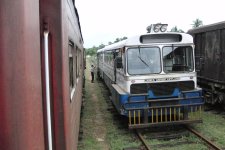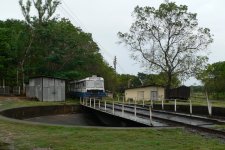- Registriert
- 25. Juli 2005
- Beiträge
- 8.359
Hallo Premasiri,
wünsche Dir uns allen Usern auch ein schönes Pfingsfest!
Es ist immer wieder interessant, wenn man Roystons Berichte über seine Vergangenheit liest.
Da hat er mal wieder was Schönes gefunden. Ist mit 117 USD für 2 Pers., Standardz. m. Frühstück, nicht gerade günstig, aber für die letzte Nacht vor dem Flug bestimmt gut zum Relaxen.
Ist mit 117 USD für 2 Pers., Standardz. m. Frühstück, nicht gerade günstig, aber für die letzte Nacht vor dem Flug bestimmt gut zum Relaxen.
Liebe Grüsse, Biggi
wünsche Dir uns allen Usern auch ein schönes Pfingsfest!
Es ist immer wieder interessant, wenn man Roystons Berichte über seine Vergangenheit liest.
Amagi Lagoon Hotel main block as seen from tree house
It’s clean and efficient and comfortable, and even has a tree house.
Da hat er mal wieder was Schönes gefunden.
 Ist mit 117 USD für 2 Pers., Standardz. m. Frühstück, nicht gerade günstig, aber für die letzte Nacht vor dem Flug bestimmt gut zum Relaxen.
Ist mit 117 USD für 2 Pers., Standardz. m. Frühstück, nicht gerade günstig, aber für die letzte Nacht vor dem Flug bestimmt gut zum Relaxen. Liebe Grüsse, Biggi





















































































